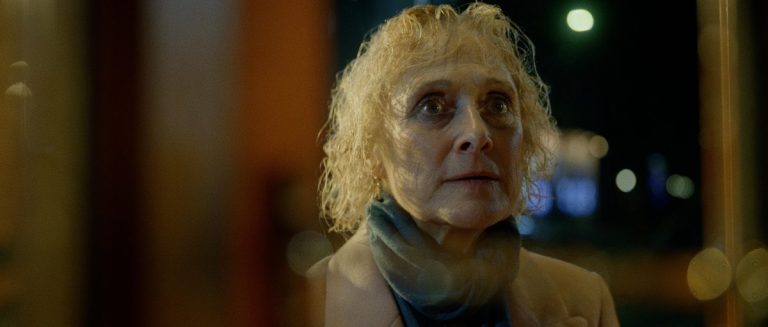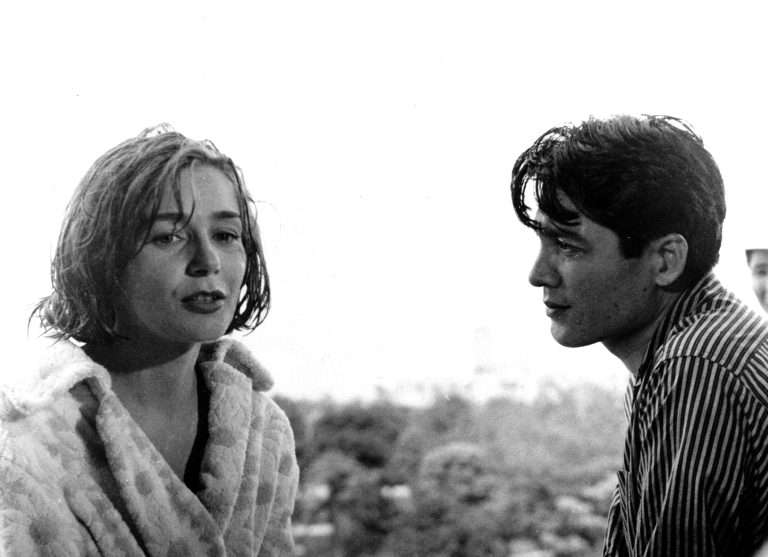At first glance, The Menu (2022) seems like a razor-sharp satire—an exquisite takedown of elitism, art’s decay under capitalism, and the self-importance of the culinary world. But what if there’s something far more sinister simmering beneath the surface?
What if Hawthorne Island isn’t just a physical prison but a metaphysical one? A place outside time and reality, where its guests aren’t just trapped for the night—they’ve been trapped forever.
Think about it. The moment they step onto the island, the real world ceases to exist. Phones lose signal. The mainland feels distant, irrelevant. There is no escape route, no deus ex machina, no last-minute heroics. Just a meticulously crafted evening leading to one inescapable conclusion: death.
But what if death isn’t the end?
What if these guests—food critics, finance bros, washed-up actors, and the ultra-rich—aren’t here to die, but to atone? What if they’re already dead, reliving their sins in a purgatorial loop, where every course on Chef Julian Slowik’s grotesque “menu” serves as a painful reminder of their earthly transgressions?
The more I think about it, the more it makes sense. The island isn’t a restaurant. It’s a reckoning. Slowik isn’t a chef—he’s something else entirely. A judge. A tormentor. A gatekeeper.
And their deaths? Not an ending, but a ritual. A cycle. An eternal judgment.
Except for one person. Margot.
She’s the only wild card. The only one who wasn’t meant to be here. And maybe—just maybe—her escape isn’t just survival. It’s redemption.
But does that mean everyone else is doomed to burn again and again, night after night, forever?
Let’s dig deeper.
The Island as Purgatory: No Exit
Purgatory, in theological terms, is not merely a waiting room between heaven and hell—it is a place of reckoning, where souls are forced to confront their sins before their final judgment. Hawthorne Island mirrors this liminal space, not just as a setting for Slowik’s elaborate dinner but as a metaphysical prison, where the guests are subjected to ritualized punishment disguised as haute cuisine.
A World Cut Off: Isolation as Damnation
From the moment the guests arrive, something feels off. Hawthorne Island is accessible only by boat, shrouded in mist, and utterly detached from the rest of the world. Their phones lose service. Any connection to reality fades. No one—not even the ultra-rich patrons accustomed to bending reality to their whims—can call for help.
Time itself seems distorted. The night stretches unnaturally long, each course dragging them deeper into despair. The staff, emotionless and eerily synchronized, resemble spectral attendants more than human employees. They move with purpose—not the kind that comes from training, but the kind that suggests they are carrying out an eternal, inescapable duty.
If this were just a restaurant, panic would set in. Someone would demand to leave. But no one does. Even when an escape attempt is possible—like trying to take the boat or use a phone—there is an eerie acceptance of their fate. Their passive compliance suggests something deeper at play: a subconscious understanding that they belong here. Like souls in purgatory, they have already surrendered to judgment.
A Temple of Reckoning
The design of the restaurant itself reinforces this purgatorial reading. The stark, minimalist dining room is devoid of warmth or indulgence, its muted palette rejecting the very excess the guests came to celebrate. There are no unnecessary adornments, no distractions—just a space meant to confront and expose.
Then there’s the open kitchen, which resembles something more sacred than functional. It is an altar, and at its center stands Chef Julian Slowik, not just as a culinary genius but as a high priest of judgment. Every dish he serves is a sermon, stripping away his guests’ pretenses layer by layer. His staff—silent, reverent—act as his acolytes, executing his vision with unwavering devotion. This isn’t hospitality. It’s a ritual.
Descent, Not Ascent: A Reversed Purgatory
In Dante’s Purgatorio, souls must climb a mountain, purging their sins as they ascend toward redemption. But Hawthorne Island follows the opposite trajectory. Instead of rising toward absolution, the guests descend deeper into their own moral failures.
Each course of Slowik’s menu acts as a trial, exposing their arrogance, corruption, and complicity. They are stripped of their illusions, their personas, until they are left with only their rawest, truest selves. And when the final dish is served—a fiery sacrifice in the form of a grotesque s’mores spectacle—it becomes clear:
This was never a dinner.
This was never about food.
This was a reckoning.
And for those who remain, there is no escape. Only fire. Only judgment. Only the endless, looping horror of realizing that this has happened before. And will happen again.
The Seven Deadly Sins: A Rogues’ Gallery
In The Menu, the guests at Hawthorne aren’t just victims of a deranged chef’s cruelty—they are sinners, already damned before they even step onto the island. Each one embodies a Deadly Sin, their punishment unfolding course by course, leading them to an inevitable fate. Slowik is not merely serving food; he is serving judgment.
Gluttony – Lillian Bloom (The Food Critic)
Gluttony isn’t just about overindulging in food—it’s about consumption without regard for consequence. Lillian Bloom doesn’t just eat; she devours experiences, turning art into disposable content. Her power lies in her words, in her ability to make or break a restaurant with a single review, yet she never acknowledges the lives she affects.
Her sin is not indulgence but intellectual and emotional gluttony. She gorges herself on creative expression, treating chefs like Slowik as mere ingredients in her personal tasting menu of influence. She thinks she appreciates fine dining, but she strips it of meaning, reducing it to trends, buzzwords, and critiques designed to elevate herself rather than the art.
Her punishment? She is confronted with the reality of her power. Slowik mockingly credits her for bankrupting a restaurant with her scathing reviews, showing her the destruction her unchecked consumption has caused. By the time dessert arrives, she is forced to accept that she has never truly tasted anything—only consumed and discarded.
Greed – The Financiers (Soren, Dave, and Bryce)
Soren, Dave, and Bryce are not just rich—they are predatory, reveling in capitalism’s ability to crush others while keeping them insulated from consequence. They brag about cutting corners, embezzling money, and exploiting workers, wearing their corruption like a badge of honor.
They don’t create, they extract. Their wealth is not earned but stolen, a monument to unrepentant greed. They feel entitled to luxury, believing that their money makes them untouchable—even in a room where their deaths are inevitable.
Slowik’s punishment for them is poetic: they are stripped of their status. Their money, their power, their connections—none of it can save them. When they are forced to run for their lives in the “manhunt” course, they experience the fear and desperation of those they have exploited. Their deaths are not quick or dramatic, but pathetic—befitting men who built their lives on nothing but empty excess.
Also Read: 7 Movies to Watch If You Like The Menu (2022)
Lust – George Diaz (The Washed-Up Actor)
Lust in The Menu is not just sexual—it is narcissistic desire, a craving for attention, power, and adoration. George Diaz, a washed-up actor clinging to relevance, embodies this. His charm is artificial, his presence a desperate attempt to remain desirable in a world that has moved on.
Slowik despises Diaz, not because of a personal slight, but because Diaz represents the hollow spectacle of fame. He once made a bad movie—one that Slowik watched on his only day off, ruining the single moment he had for joy. This seems trivial, but it highlights Diaz’s true crime: he represents an industry that turns everything, even art, into a disposable commodity.
His punishment? He is forced to witness his own irrelevance. Unlike the others, he isn’t given the dignity of a personal reckoning—because in Slowik’s eyes, he isn’t even worth it. He is dismissed, like an actor past his prime, waiting for an applause that will never come.
Pride – Richard Liebbrandt (The Food Snob)
Pride is the deadliest sin, the sin of knowing better than everyone else. Richard Liebbrandt is a self-proclaimed foodie, someone who believes he understands the depths of Slowik’s genius. He does not experience food—he analyzes it to death, treating it as something to be conquered rather than enjoyed.
His sin mirrors that of Lucifer: a refusal to submit, a need to elevate himself above others. He speaks of Slowik’s artistry as if he is on equal footing, unaware that he is the very type of customer Slowik despises—a man who believes that understanding something gives him control over it.
His punishment? Being proven wrong. Slowik breaks him down, exposing him as a fraud. When stripped of his pretentious facade, Richard is just another helpless guest, no different from the others. His ultimate humiliation is realizing that, despite his belief in his superior palate, he never truly understood anything about food—or Slowik—at all.
Envy – Elsa (Slowik’s Devoted Assistant)
Elsa appears devoted, but beneath her rigid loyalty lies envy—envy of Slowik’s power, envy of the guests’ freedom, envy of anyone who could be more important than her. She follows Slowik with cult-like reverence, but deep down, she longs to be him.
Her final act is telling. When Margot challenges Slowik’s authority, Elsa lashes out, attempting to eliminate the one person who threatens her place in this hierarchy. It is an act of desperation, a last-ditch effort to reclaim control.
Her punishment? A slow, meaningless death. She does not receive the grandeur of a final meal or an elaborate execution. Instead, she dies fighting for an authority she was never meant to have, a failed usurper who was never even close to the throne.
Wrath – Julian Slowik (The Chef, The Executioner)
Slowik is more than just a chef—he is wrath incarnate. His rage is not personal; it is cosmic, a fury born from years of seeing his passion corrupted by the very people he once sought to serve.
His wrath is not just revenge—it is divine judgment. He sees himself as a force of justice, punishing those who have warped food into a commodity rather than an experience. But his rage is also self-directed. He knows he is complicit. He allowed himself to become part of the system he despises. That’s why, in the end, he does not spare himself.
His punishment? The fire he ignites consumes him too. Unlike the guests, he chooses his fate, embracing the flames as both punishment and purification.
Sloth – The Guests’ Collective Apathy
Sloth is often mistaken for laziness, but in its truest form, it is spiritual inertia—the refusal to engage, to reflect, to fight for one’s soul. The guests at Hawthorne do not resist. They do not question. Even as their deaths become inevitable, they sit, they eat, they wait.
Their complicity is their sin. They live lives of passive indulgence, consuming without consequence, coasting through existence without purpose. And in the end, they accept their deaths as easily as they accepted their lives—without question, without resistance, without a fight.
Their punishment? They burn, but they do not scream. They die, but they have already been dead for a long time.
The True Horror of Hawthorne
If this theory holds, then the true horror of The Menu is not that Slowik kills his guests. It’s that they were already damned before they arrived. Their judgment was never in question. Their only choice was to recognize their sins—or be consumed by them.
And in the end, only one person does. Margot escapes—not because she is innocent, but because she is willing to reject the game entirely. The rest?
They were always going to burn.
The Chef as Psychopomp: Slowik’s Divine Madness
In mythology, a psychopomp is a guide of souls—an entity tasked with escorting the dead into the afterlife. But Julian Slowik is no benevolent ferryman. He is a fallen angel, a being who once sought perfection but now presides over a purgatorial inferno of his own making. Like Charon ferrying souls across the Styx, he brings his guests to their final judgment. Unlike Charon, however, he is both judge and condemned.
His role is deeply paradoxical—he is both a savior and a tormentor, a creator and a destroyer, an artist and a prisoner of his own creation. His madness is not random; it is ritualistic, purposeful, almost divine.
Omniscience: The All-Knowing Judge
From the moment his guests arrive at Hawthorne, Slowik demonstrates an almost supernatural level of awareness. He knows far too much about them—Richard’s affair, Lillian’s history of destroying restaurants, the financiers’ fraud, Tyler’s deceit. This level of insight is not mere research; it suggests omniscience, as if the guests are not stepping onto an island but into a cosmic courtroom where their sins have already been tallied.
His knowledge serves a purpose: he does not simply kill them—he exposes them first. Each revelation is a step in their judgment, forcing them to confront the ugliness of their own existence before their inevitable demise. Like a priest performing last rites, he ensures they understand why they must die.
But his omniscience is not absolute—his plans begin to falter when Margot (Erin) disrupts his carefully constructed ritual. In her, he finds an anomaly—a soul that does not fit neatly into his vision of damnation.
Ritualistic Control: The Menu as a Sacrament
Slowik’s dinner service is not a meal—it is a liturgy. Each course follows a strict, almost religious structure designed not just to feed, but to strip away layers of identity, revealing the guests for what they truly are. The dinner unfolds like a mass, a confession, a ritual sacrifice:
- First Course (Indulgence) – The guests are flattered, seduced into complacency. They believe they are honored to be there, unaware they are being fattened for slaughter.
- Second Course (Revelation) – The sins begin to surface. The breadless bread plate mocks their entitlement, and the tortillas expose their past misdeeds.
- Third Course (Punishment) – The violence begins. A man is shot, the guests are divided, forced to understand that they are not in control.
- Fourth Course (Despair) – Resistance proves futile. The manhunt turns them into prey, the chef’s nihilism infecting them.
- Final Course (Damnation) – Their roles solidify. They are not just guests—they are sacrifices, part of the grand design.
Margot is the variable, the element that was never meant to be there. She disrupts the sacrament, refusing the ritual, rejecting the artifice, demanding something simple, real. Her presence forces Slowik to question his own role—is he a god, or just another prisoner of the system he created?
Self-Immolation: The Fire as Penance
For all his control, Slowik knows he is no god. He understands that he, too, is a sinner, that his pursuit of artistic purity has made him just as monstrous as those he condemns. Unlike the guests, however, he does not beg for mercy. He chooses his own fate, accepting that his only way to achieve absolution is to burn alongside them.
- The kitchen is both his throne and his prison—he built it, he reigns over it, and he is bound to it.
- His death is not revenge—it is a final act of purification. He is cleansing himself, purging the last vestiges of his ambition.
- The fire consumes him willingly, much like ancient martyrs who set themselves alight in protest or sacrifice.
Slowik’s end is both tragic and poetic. He is neither hero nor villain, but a man who tried to make art divine—only to realize he had created hell instead.
Margot: The One Who Walks Away
In contrast to Slowik, Margot is the only one who truly escapes—not just physically, but spiritually.
- She rejects the ritual, demanding a cheeseburger, reminding Slowik of why he ever loved cooking in the first place.
- She breaks the cycle, refusing to play into the system of self-indulgent critique and pretentious artistry that destroyed him.
- She is not innocent, but she is uncorrupted—she has not yet lost herself to the excesses of this world.
Her survival is not just an escape from the island, but from the existential fate of the others. She alone chooses to live. The rest?
They were never meant to leave.
The Illusion of Choice: Why No One Fights Back
One of the most unsettling aspects of The Menu is the passivity of the guests. Faced with certain death, they do not truly resist. There are fleeting moments of defiance—a desperate run for the dock, a feeble attempt to call for help—but these efforts are half-hearted at best, doomed from the start.
This is not the behavior of people fighting for survival. It is the behavior of souls resigned to judgment. Like actors following a script they don’t fully understand, they perform their assigned roles, their fates already decided.
Tyler’s Suicide: Guilt Masquerading as Devotion
Tyler’s fate is particularly disturbing because it is entirely self-inflicted. Unlike the others, who at least pretend to protest, he embraces his doom.
- His fanatic admiration of Slowik was never about love for food—it was self-loathing disguised as worship. He knew all along that this was a death march, yet he willingly participated, dragging Margot along like a sacrificial offering.
- When Slowik exposes him as a fraud, Tyler does not argue, does not resist. Instead, he accepts the noose without question, as if he had been waiting for permission to end himself.
- This is not a spontaneous act of despair—it is a final performance, a preordained scene in a narrative he believes must end with his destruction.
Like Judas in a passion play, Tyler’s role was always to betray and then self-destruct. He does so without hesitation, a man who has already condemned himself.
The Film Crew’s Complicity: Documenting Their Own Deaths
Even the film crew, accustomed to controlling narratives, do not attempt to shape their own fate.
- Their cameras keep rolling, as if this grotesque finale was always meant to be their final cut.
- They do not plead, fight, or turn against Slowik—instead, they observe their own doom with a detached acceptance, as if they are merely recording an ending written long before.
- This mirrors the way artists, critics, and media figures often consume and regurgitate tragedy—detached, passive, observers of a system they claim to critique but never challenge.
Dante’s Contrapasso: Tailored Punishments
In Dante’s Inferno, sinners suffer ironic punishments—contrapasso, where the nature of their sin dictates their torment. The guests at Hawthorne meet poetic ends fitting their crimes:
- Lillian (Gluttony of Experience) → She is denied true consumption, forced to witness her influence destroy lives before she perishes.
- The Financiers (Greed) → They are reduced to meaningless cogs, mocked and humiliated before being devoured by the flames of the very industry they manipulated.
- George (Lust for Relevance) → He dies not as a leading man, but as a footnote, irrelevant to the spectacle around him.
- Richard (Pride) → He believed he understood the chef’s artistry; in the end, he is just another course in the meal.
- Elsa (Envy) → She fights for Slowik’s approval and control, only to be discarded as disposable, proving she was never truly valued.
Each guest’s death is not random—it is a ritualized reckoning, a divine balancing of the scales.
The Cheeseburger: A Humble Request
Margot’s key to survival is not strength or cunning—it is humility.
- Instead of playing along with Slowik’s grand vision, she rejects it entirely.
- She does not engage in pretentious critiques, nor does she try to prove herself worthy of the meal.
- By asking for a cheeseburger, she reminds Slowik of his lost humanity, of a time when cooking was about joy, not punishment.
This moment is his final test—a chance to grant mercy. And he does.
Margot understands something the others never did: The only way to win this game is to not play it.
The Boatman: A Modern Charon
Margot’s escape is also symbolic.
- The boat waiting for her evokes Charon, the mythical ferryman who transports souls out of the underworld.
- Unlike the others, who are too far gone, she is allowed passage, granted the rare chance to leave purgatory and rejoin the living.
- Her journey back to the mainland is silent, solemn, as if she is awakening from a nightmare, or perhaps returning from the dead.
Margot’s Escape: A Theological Loophole
If The Menu is a tale of damnation, then Margot’s escape is a loophole in divine judgment.
- She is not innocent, but she is self-aware. She knows she does not belong in this world of excess.
- She acknowledges the illusion, choosing something real—a meal made with care, not ego.
- She seeks no power, no validation, no spectacle—only nourishment, a simple, human pleasure.
This is the test all the guests failed.
In a world where art, wealth, and identity have been consumed by performance, Margot’s greatest act of rebellion is to be real. And for that, she is set free.
The Loop: An Eternal Last Supper
As The Menu reaches its fiery climax, Hawthorne is consumed in flames, its carefully curated experience reduced to ashes. But what if this is not the end, but merely a reset?
Like Sisyphus forever rolling his boulder uphill or Prometheus endlessly devoured by vultures, the guests and staff may be doomed to replay this night in perpetuity, trapped in a purgatorial cycle of their own making.
Slowik’s Curse: The Artist Doomed to Repeat
Chef Julian Slowik is both executioner and condemned—a man locked in an eternal cycle of creation and destruction.
- His monologue about his mother—“She loved me, but she was cruel”—suggests a lifetime of reconciling pain through his art, a trauma that can never truly be resolved.
- He destroys everything—his guests, his legacy, himself—yet he cannot escape his role. Like a playwright forced to stage the same tragedy every night, he must perform this ritual again and again.
- His suicidal sacrifice does not free him. Instead, it ensures his torment will never end.
If Hawthorne is purgatory, then Slowik is its warden and prisoner, a man whose masterpiece is not a single meal, but an infinite loop of reckoning.
The Guests: Damned to Repeat
The guests, too, seem resigned to their fates. Their passivity, their lack of true resistance, suggests this has happened before—and will happen again.
- Each course serves as a test, yet they fail every time, accepting their deaths as if they have already lived them before.
- Their punishments are tailored to their sins, much like Dante’s Inferno, implying that this is not their first judgment, nor will it be their last.
- Even in their final moments—burning alive in their sacrificial marshmallow coats—they do not scream in protest. Instead, they accept their fate, as if they are merely playing their designated part in an endless performance.
Like actors in a haunted dinner theater, their lines and actions are preordained. Even the fire, meant to cleanse, may simply be resetting the stage for another night.
The Theater of Damnation
What if Hawthorne is not just purgatory, but a play with no final curtain?
- The restaurant’s rigid structure, the guests’ scripted responses, and Slowik’s ritualistic control all point to an eternal performance.
- Every guest is handpicked—not because they are special, but because they fit the archetypes required for the show.
- Margot disrupts the cycle, but only for herself. For those left behind, the script must continue.
Perhaps, when the flames subside, the staff will rebuild. The guests will return—different faces, same sins. The night will begin anew, and the next “exclusive dining experience” will be served to a fresh batch of the damned.
This is not a meal.
It is a judgment with no end.








